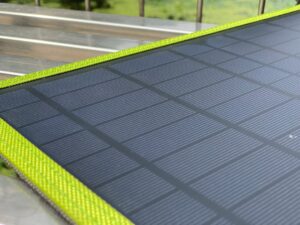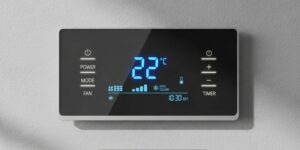Air vents and ducts play a crucial role in the overall efficiency of a heating, ventilation, and air conditioning (HVAC) system. They are responsible for distributing conditioned air throughout a building, ensuring that every room receives the appropriate temperature and airflow. Properly functioning air vents and ducts not only enhance comfort but also contribute to energy efficiency.
When these components are in good working order, they help maintain a consistent indoor climate, reducing the workload on HVAC systems and ultimately lowering energy bills. Moreover, the significance of air vents and ducts extends beyond mere comfort. They also play a vital role in indoor air quality.
A well-maintained duct system can filter out dust, allergens, and other pollutants, promoting a healthier living environment. Conversely, blocked or leaking ducts can lead to poor air quality, which may exacerbate respiratory issues and allergies. Understanding the importance of these components is essential for homeowners and building managers alike, as it underscores the need for regular maintenance and prompt attention to any issues that may arise.
Key Takeaways
- Properly functioning air vents and ducts are crucial for maintaining good indoor air quality and efficient HVAC system operation.
- Signs of blocked air vents and duct leaks include uneven heating or cooling, increased energy bills, and poor air quality.
- Blocked air vents and duct leaks can be located by checking for obstructions, inspecting for visible damage, and using a smoke pencil to detect leaks.
- DIY troubleshooting for blocked air vents and duct leaks includes cleaning vents, sealing leaks with duct tape, and checking for and removing obstructions.
- Professional help for blocked air vents and duct leaks may be necessary for complex issues, extensive leaks, or inaccessible ductwork.
Signs of Blocked Air Vents and Duct Leaks
Recognizing the signs of blocked air vents and duct leaks is essential for maintaining an efficient HVAC system. One of the most common indicators is uneven heating or cooling throughout a space. If certain rooms feel significantly warmer or cooler than others, it may suggest that air is not flowing properly through the ducts.
Homeowners may also notice that their HVAC system is running more frequently or for longer periods than usual, indicating that it is struggling to maintain the desired temperature due to airflow restrictions. Another telltale sign of blocked vents or duct leaks is an increase in energy bills. When air cannot circulate effectively, the HVAC system must work harder to compensate for the lost efficiency, leading to higher energy consumption.
Additionally, unusual noises such as rattling or whistling sounds coming from the vents can signal airflow issues. These sounds may indicate that air is being forced through a blockage or escaping through a leak, both of which require immediate attention to restore optimal performance.
Identifying the Location of Blocked Air Vents and Duct Leaks

To address issues with blocked air vents and duct leaks effectively, it is crucial to identify their locations accurately. Homeowners can begin by visually inspecting their vents for any obstructions, such as furniture or debris that may be blocking airflow. Checking for dust buildup around the vent covers can also provide clues; excessive dust accumulation may indicate stagnant air due to blockages.
For duct leaks, a more thorough investigation may be necessary. Homeowners can use their sense of smell to detect any unusual odors emanating from the ducts, which could indicate mold growth or other contaminants. Additionally, they can perform a simple test by holding a lit incense stick near the duct joints; if the smoke is drawn toward a particular area, it may suggest a leak.
Using these methods can help pinpoint problem areas, allowing for targeted repairs and maintenance.
DIY Troubleshooting for Blocked Air Vents and Duct Leaks
| Issue | Solution |
|---|---|
| Blocked Air Vents | Clean or remove any obstructions from the vents |
| Duct Leaks | Seal the leaks with duct tape or other appropriate sealant |
| Impact on HVAC System | Reduced airflow, decreased efficiency, and increased energy costs |
| Preventive Measures | Regularly clean and inspect air vents, and seal any duct leaks promptly |
For those who prefer a hands-on approach, there are several DIY troubleshooting steps that can be taken to address blocked air vents and duct leaks. First, homeowners should ensure that all vents are open and unobstructed. This simple step can often resolve airflow issues without further intervention.
Cleaning the vents regularly is also essential; dust and debris can accumulate over time, hindering airflow. A vacuum cleaner with a brush attachment can be effective for this task. If duct leaks are suspected, homeowners can inspect accessible ductwork for visible gaps or holes.
Using duct tape or mastic sealant can provide a temporary fix for small leaks until more permanent repairs can be made. Additionally, sealing any gaps around vent registers with caulk can help improve efficiency by preventing conditioned air from escaping into unconditioned spaces. While these DIY methods can be effective for minor issues, it is important to recognize when professional assistance is needed for more complex problems.
Professional Help for Blocked Air Vents and Duct Leaks
While DIY troubleshooting can address some minor issues with blocked air vents and duct leaks, there are times when professional help is necessary. HVAC technicians possess the expertise and specialized equipment required to diagnose and repair more significant problems effectively. They can conduct comprehensive inspections of the entire duct system, identifying hidden leaks or blockages that may not be visible to the untrained eye.
In addition to repairs, professionals can also perform duct cleaning services to remove accumulated dust and debris from the system. This not only improves airflow but also enhances indoor air quality by reducing allergens and pollutants circulating through the home. Engaging a qualified HVAC technician ensures that any underlying issues are addressed thoroughly, providing peace of mind that the system will operate efficiently for years to come.
Preventing Future Blocked Air Vents and Duct Leaks

Preventive measures are key to avoiding future issues with blocked air vents and duct leaks. Regular maintenance is essential; homeowners should schedule annual HVAC inspections to ensure that all components are functioning optimally. During these inspections, technicians can identify potential problems before they escalate into costly repairs.
In addition to professional maintenance, homeowners can take proactive steps to keep their air vents clear. Regularly checking and cleaning vents, as well as ensuring that furniture or other objects do not obstruct airflow, can significantly reduce the likelihood of blockages. Installing high-quality air filters and replacing them as recommended will also help maintain good airflow while improving indoor air quality.
Repairing Duct Leaks
Repairing duct leaks is critical for restoring efficiency to an HVAC system. Homeowners who have identified leaks in their ductwork should consider several repair options based on the severity of the damage. For small holes or gaps, using mastic sealant or specialized duct tape can provide an effective temporary solution.
These materials are designed to withstand temperature fluctuations and maintain a secure seal. For larger leaks or extensive damage, it may be necessary to replace sections of ductwork entirely. This process typically requires professional assistance to ensure proper installation and sealing techniques are employed.
Additionally, upgrading to more energy-efficient duct materials can enhance overall system performance while reducing energy costs in the long run.
Maintaining Clean and Clear Air Vents and Ducts
Maintaining clean and clear air vents and ducts is essential for ensuring optimal HVAC performance and indoor air quality. Regular cleaning should be part of a homeowner’s routine maintenance plan; this includes vacuuming vent covers and ensuring that no dust or debris accumulates within the ducts themselves. In some cases, hiring professionals for thorough duct cleaning every few years may be beneficial, especially in homes with pets or high levels of dust.
Furthermore, homeowners should remain vigilant about monitoring their HVAC systems for any signs of trouble. Keeping an eye on energy bills for unexpected increases or paying attention to changes in airflow can help catch issues early on. By prioritizing regular maintenance and being proactive about cleaning efforts, homeowners can enjoy a comfortable living environment while maximizing the efficiency of their HVAC systems for years to come.
If you are experiencing issues with blocked air vents or duct leaks in your home, it is important to address them promptly to ensure proper airflow and energy efficiency. One related article that may be helpful is “The Benefits of a Walk-In Shower: Why You Should Consider One for Your Bathroom” which discusses the importance of proper ventilation in bathrooms to prevent mold and mildew growth. You can read more about it here.
FAQs
What are the signs of blocked air vents or duct leaks?
Some signs of blocked air vents or duct leaks include uneven heating or cooling in different rooms, increased energy bills, strange odors coming from the vents, and excessive dust buildup in the home.
How can I identify if my air vents are blocked?
You can identify if your air vents are blocked by checking for reduced airflow from the vents, feeling for temperature differences in different rooms, and visually inspecting the vents for any obstructions.
What are the potential causes of blocked air vents?
Potential causes of blocked air vents include the accumulation of dust and debris, furniture or other objects blocking the vents, and the growth of mold or mildew within the ductwork.
How can I prevent air vents from getting blocked?
You can prevent air vents from getting blocked by regularly changing air filters, keeping the area around the vents clear of obstructions, and scheduling regular duct cleaning and maintenance.
How can I fix duct leaks in my home?
You can fix duct leaks in your home by sealing the leaks with duct sealant or metal tape, insulating any exposed ductwork, and ensuring that all connections are secure and airtight.






